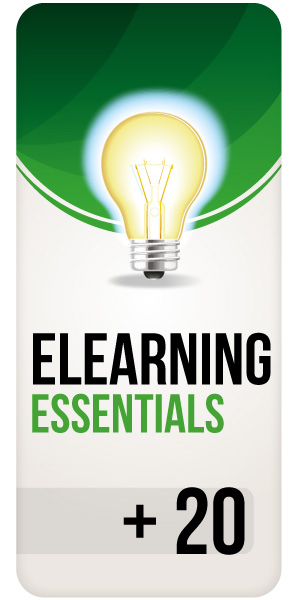At SHIFT eLearning, we are so lucky to have the brightest contributors talking about everything from eLearning strategy to instructional design.
In case you need a refresher here are more than 20 eLearning essentials we learned in 2012, and we need to reinforce and keep in mind this year:
 1. If you want engaged and interested students, structure content into modules. This will make it easier for learners to make use of the content in a wide variety of contexts. Also, make sure your course is broken down into sections that the learner can get through in 20 minutes or less.
1. If you want engaged and interested students, structure content into modules. This will make it easier for learners to make use of the content in a wide variety of contexts. Also, make sure your course is broken down into sections that the learner can get through in 20 minutes or less.
2. Learners love quick facts and figures and aggregating the latest data about a topic in visual charts, infographics and/ or diagrams can increase their engagement — and here are other ideas you should be implementing to create great eLearning courses.
3. To make sure your courses work for learners, there are 5 things you should check before you publish and deliver them.
4. People are less likely to find a course engaging if it looks unprofessional, with poor quality or it's littered with grammatical errors and typos. Therefore, always keep the quality of your graphics, videos and audio at a consistent level. Ensure your course is not only easy to understand but also high in quality, including high standards in instructional design, media, usability, appearance and editorial.
5. Make sure you use contrasting colors for backgrounds and fonts. Color actually impacts the effectiveness of your courses. For example, overusing complex coloring such as gradients may slow down the course. Don´t forget to choose the “right” colors using this guide.
6. Video continues to be a popular tactic in eLearning and mLearning these days. Here are some ways that video can play a role in your courses. Make video a key part of your next course by employing these five tips to know when to use it.
7. Even as eLearning gets more technologically savvy, and there is a growing number of theories, strategies, tools and applications that suggest us new ways to develop our courses, you can’t forget the basics, the essential elements of effective eLearning course design.
8. Don’t overlook the importance of content when creating eLearning. The course isn't trying to impart information – it's trying to alter the learner's behavior, by teaching them to do something, or not do it, or do it differently. The content is only a means to that end. Avoiding content-centered design is just one tip for making your courses less boring. Get more tips here.
9. If you are not sure your eLearning is remarkable (stands out and make students take notice), try using this checklist to help you find out.
10. Once a company gets started with eLearning, it’s critical to monitor and track the program’s performance. There are four eLearning metrics that should be measured-- always.
11. Remember to involve the student through the use of interactive elements, but make sure the action builds the message rather than detracts from it. Find different ways to liven up the course with the right measure of interactivity and to have learners do more than just read.
12. One great way to meet the need for a dynamic, relevant learning program is to leverage real- time data. Here are a few tips for using real-time data to create effective learning content.
13. Eliminate all unnecessary detail. Too often, eLearning courses include page after page of unnecessary information. Make it as simple as you can, but no simpler. The extra detail won't be remembered so why include it. If a learner genuinely wants more detail, provide additional support by adding attached documents or links within the course.
14. Motivating learners isn’t easy, but there are a few things you can do to make the process easier, including the use of this guide.
15. Writing for eLearning can feel puzzling, not only you need skills for creative, persuasive and technical writing, but also you frequently have to write about topics for which you know very little. Here’s some brief guidelines you need to know to survive it.
16. It can be overwhelming sorting through all the information on the web, with so many blogs, ebooks and articles about eLearning out there. Here is a pinterest board with a selected group of eLearning resources-- hopefully it will make it easier for you to find good stuff.
17. If you want to keep your eLearning projects on track, you need to ask the right questions before you start. If you answer these questions each time you begin a course, you will definitely increase the quality of it.
18. Don't use media simply for the sake of using it. Make sure it applies to the training in a logical manner and reinforces the information.
19. Put the information into context using examples, cases and stories. Learners, particularly if they're at work, want ideas that are relevant to their current problems. Use these 10 strategies and your idea is much more likely to be understood and remembered.
20. Relevance is by far the most reported successful motivator when taking an eLearning course. Here are six ideas to inspire you.
21. Do you want your course to be attractive and to catch attention (who doesn’t)? Here are 17 Free Stock Photos Sites for eLearning that will help you make that happen.
22. Storytelling is a great way to get learners inspired and make learning more effective:
- Here are the key elements of eLearning Storytelling.
- Here are ten key points on Why you need To Use Storytelling For Learning.








